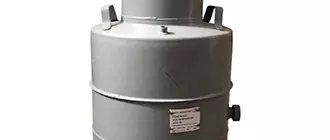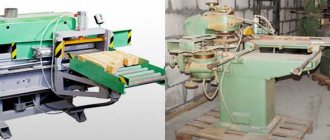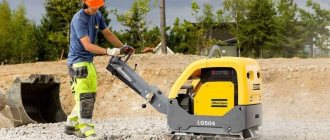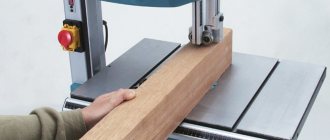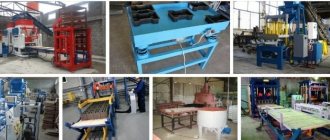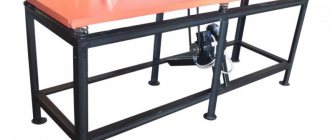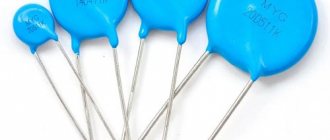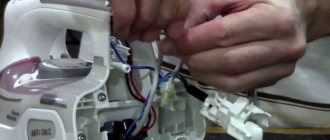From time immemorial, people have measured temperatures. It would seem that nothing is simpler, but upon closer examination this issue immediately acquires more and more complexities. For primitive man, it was probably enough to measure the temperature according to the cold-warm principle and, depending on this, he put on either a loincloth or the skin of a bear killed the day before! But times are changing, and this kind of measurement is no longer satisfactory, and the accuracy of the measurement is no longer sufficient.
Various types of thermometers appeared that made it possible to measure temperature quite accurately. But they were not always convenient, since to measure with a thermometer, contact of the measuring probe with the object being measured is necessary. But what if you need to measure the temperature at a point that is very difficult to reach? What if the point is in an aggressive environment? What if the object is in constant motion?
In general terms, a task was posed and engineering thought began to search for a solution to this problem. Thus, in the second half of the last century, the first pyrometers appeared. The first pyrometer was developed and released in 1967 by the American company WAHL.
The company was able, based on the most important physical discoveries in this area, to begin mass production of pyrometers with high consumer characteristics and were able to hide all this in a small case. The new principle of measurement was to construct comparative parallels, when a conclusion about body temperature was made based on data from an infrared receiver that determined the amount of thermal energy emitted by the body. This measurement method made it possible to significantly expand the boundaries of measuring the temperature of solid and liquid bodies in the most inaccessible places. Pyrometers have firmly taken their place in the line of instruments for determining temperature!
Strictly speaking, a pyrometer is a device that non-contactly measures the temperature of various types of bodies and environments based on measuring the power of thermal radiation of objects being measured in the infrared range, as well as in the visible light region.
Based on this, the main characteristics of pyrometers can be determined - optical resolution and adjustment of the degree of blackness of the body . Optical resolution or, as it is also called, the sighting index is the ratio of the diameter of the sighting spot on the surface of an object, the temperature (radiation) measurement from which is recorded by a pyrometer to the distance to the object. You can imagine it like this - the cone beam of a flashlight illuminates the surface and the further away the surface, the larger the spot is illuminated, that is, with increasing distance to the object being measured, a larger surface is measured.
But what happens when you need to measure a very small object surrounded by other objects that have different temperatures? The answer is simple - the viewing coefficient (optical resolution of the pyrometer) should be maximum (that is, the cone of the “flashlight” should be very narrow at the limiting value of the beam). This is achieved by using high-quality optics or, more simply, a pyrometer lens, while the cost of identical pyrometers with different lenses (sighting coefficients) can differ tens of times! For sighting accuracy, modern pyrometers have a laser pointer that will show the center of the measuring spot.
Under no circumstances should this point be perceived as a temperature measurement area - depending on the optical resolution, the measurement area will be a circle, centered at the point from the laser beam, with a diameter of 1 centimeter to 1 meter! The degree of emissivity of a body, or as I call it otherwise, the emissivity coefficient characterizes, first of all, the properties of the surface of an object measured by a pyrometer. This indicator is defined as the ratio of the energy emitted by a given surface at a certain temperature to the energy emitted by a black body at the same temperature. It can take values from 0.1 to values close to 1.
For example: if for an oxidized steel surface the coefficient is approximately 0.85, then for polished steel it decreases to 0.075. This is one of the main factors that influence the accuracy of the readings; in other words, the temperature cannot be measured with great accuracy, without adjusting the pyrometer, for a specific object. But this needs to be done only when we need to obtain very accurate measurements.
In everyday life, when measuring temperature, the error introduced by the emissivity is commensurate and fits into the general error, while it is necessary to take into account the “uniformity” of objects measured by the pyrometer, that is, with the same emissivity or in a certain range.
All pyrometers can be divided into the following categories or characteristics:
- According to the principle of measurement, pyrometers are brightness pyrometers, which allow you to determine the temperature of an object by comparing the color with a standard. Radiation pyrometers measure the temperature of an object by recalculating the power of thermal radiation. Color pyrometers allow you to draw conclusions about the temperature of an object based on the results of comparing its thermal radiation in different spectra.
- By temperature range: Low temperature. Pyrometers of this type are capable of determining negative temperatures, while the range of positive temperatures can be quite large. High temperature. Pyrometers operate in a high temperature range and are not capable of measuring objects with negative temperatures.
- By method of operation: Portable pyrometers designed for use in field conditions. They are light in weight, display indicators, and are self-powered. Designed for a very wide range of temperature measurement applications. They can have internal memory and connect to a computer to transfer data. Stationary pyrometers are designed to perform mostly permanent measurements at a specific point. They have increased accuracy and, as a rule, do not have their own display, but transmit data to a computer or control panel. They are able to work under unfavorable environmental conditions. Most often they are used when measurements are required at industrial enterprises. They are large in size and weight.
The scope of pyrometers is very wide, and they are increasingly replacing traditional instruments for measuring temperature. But still, the main task of pyrometers is to measure temperature in hard-to-reach places and in places with aggressive environments, as well as objects that are in constant motion or located in electrical or fire hazardous areas.
Currently, there are a lot of offers for the sale of pyrometers, and the main thing here is not to make a mistake in choosing a manufacturer. The pyrometers we offer are manufactured by China's industrial state-owned enterprise, CEM Electronic Devices and Components Factory, SHENZHEN EVERBEST MACHINERY INDUSTRY CO., LTD.
The state enterprise "SEM" belongs to the category of enterprises that have the highest rating from experts for the quality of their products. Many leading companies specializing in the development of measuring equipment offer their production orders to this company. The line of pyrometers presented includes dozens of pyrometers that provide all temperature measurement ranges.
When choosing a pyrometer, you should pay attention to the following features and characteristics:
- Measured temperature range. Different models of infrared pyrometers are capable of showing the temperature of objects from negative to high temperatures; it is better to choose a pyrometer already knowing what temperature range you need
- Optical resolution. also called the sighting indicator. The optical resolution of a pyrometer is determined by the ratio of the diameter of the so-called spot on the surface of an object, the radiation from which is recorded by the pyrometer, to the distance to the object. To understand what optical resolution of a pyrometer you need, you need to know where the device will be used. If it is necessary or possible to measure the temperature of an object from a short distance (10-30cm) and the area of the object is quite large (from 3cm2), then infrared thermometers with a small optical resolution, for example 8:1, are unlikely to be suitable. If you need to measure temperature from a distance of several meters, then you should choose a pyrometer with high optical resolution, so that the measurement spot does not extend beyond the object, for example 50:1.
- Below is a picture of a pyrometer and its temperature measurement spot at different distances, how to choose a pyrometer:
- Error. The pyrometer is selected depending on the accuracy with which you need to measure the temperature of an object using a non-contact thermometer
- Emissivity (emissivity). Emissivity (sometimes called “blackness”) describes the ability of a body surface to emit infrared energy. This coefficient is defined as the ratio of the energy emitted by a particular surface at a certain temperature to the energy emitted by a black body at the same temperature. The emissivity of a pyrometer can take values from very small, below 0.1 to close to 1. In inexpensive models of pyrometers, it is usually fixed (averaged 0.95), if you measure the temperature of an object whose emissivity degree differs from 0.95, then the pyrometer with a fixed coefficient will measure with a larger error. More expensive models have the ability to set their own emissivity for each object. Incorrect choice of emissivity is the main source of error for all pyrometric temperature measurement methods.
- Contact temperature sensor (thermocouple). More expensive models include a thermocouple with which you can calibrate the pyrometer for each object by calculating the emissivity.
- Laser target designator. Almost all models of pyrometers have a laser pointer; it simplifies pointing the infrared thermometer at a target. Professional models of pyrometers have a built-in double laser pointer; when pointing at an object, when two laser beams converge at one point, the optimal distance to the object is achieved.
- Ability to record video and photos. Pyrometer models with the ability to simultaneously record video of the measured object when measuring temperature; this function is convenient when analyzing object temperature data.
- Transfer data to PC. Models with a USB interface for data transfer to a PC and subsequent analysis
- Logging and holding data on the display. The ability of pyrometers to record the maximum and minimum when measuring temperature, as well as to retain readings after measurement.
Application area
Pyrometers have found quite wide application in those industries where a large number of heating devices are installed. In the field of construction and thermal power engineering, they are used to calculate the heat loss of structures, including a pyrometer that helps to identify damage to thermal insulation.
In industry, such devices make it possible to analyze the temperature of various processes remotely. This is necessary, for example, in mechanical engineering, metallurgy and other industries.
Thus, electricians check the heating level of wire connections, and car mechanics check the heating of car parts. Pyrometers come to the aid of scientists during various studies or experiments: this is how they determine the accuracy of the temperature of substances and bodies.
In everyday life, people use such devices to determine body temperature, water, food, etc.
Data update time
Another important parameter of a pyrometer, in addition to accuracy, is the frequency of updating readings. It is especially important to have a high frequency when scanning and comparing temperatures over large surfaces.
In this case, the device imitates the operation of a thermal imager and looks for maximums and minimums.
Results of 250ms or less are considered very good indicators. Only well-known brands have such parameters. For example, the same Fluk.
Stationary modification
These models differ significantly in layout and represent a cylindrical optical module, inside of which a measuring sensor is enclosed. This component is connected by a special durable cable to an electronic control module, which is equipped with a monochrome liquid crystal display and a push-button control menu.
The unit is placed in a closed panel, power and signal lines are connected. Subsequently, the value of the output current (or voltage) is transmitted via wires to the computer using special logic tools (controllers) and specialized software. This scheme is more convenient, since the screen of the electronic module is small. It is difficult to distinguish the displayed readings.
Stationary pyrometers are suitable for use in various industries. They are manufactured with a wide range of measurable limits. Thanks to this quality, the device allows you to control any technological process related to temperature.
What does a pyrometer measure?
The subject of the definition is the average temperature value for the surfaces of objects and bodies within the measurement spots. They have an ellipsoid or round shape. The longer the path from the measurement object to the pyrometer, the larger the size of the spot. The device is aimed at the desired object or material using a laser pointer built into it. It is directed directly to the center of the circle being measured.
Modern pyrometers record temperature remotely, allow minimal errors, and also have an ergonomic design and autonomous power supply. This equipment is used when necessary:
- control the temperature conditions of objects in conditions of high risk of electric shock;
- deal with the surface of objects where sudden temperature changes may be observed;
- measure the heating force of objects with unusual temperature conditions (high levels on one element and normal values on another element).
Since the device has a special operating principle based on “reading” the radiation of thermal waves in the infrared range, it is capable of recording temperature indicators of objects that are located at a distance of up to 15 meters. Thanks to this, the device has the following advantages:
- safety;
- ease of use;
- high accuracy of recording parameters of bodies, objects, structures, materials.
Temperature control in hospital
Today, like decades ago, temperature control of patients in the hospital is carried out the old fashioned way, i.e. using a mercury thermometer. This is especially bad now, when it is necessary to minimize doctor-patient contact. Today, in infectious diseases hospitals, the wards where patients lie are separated by a glass window from the common corridor. As mentioned above, the RELSIB WT50 thermometer transmits temperature readings remotely to a smartphone in a special mobile application. It is enough to distribute these thermometers to each patient in the ward, then approach the doctor at the right time to this window and give the command to measure the temperature. Patients will install thermometers for themselves, and after 10 minutes the doctor will come to this window again and take temperature readings for each patient on his smartphone in an individual profile. It is necessary to protect doctors, and to do this, make their work easier and safer with the help of modern devices.
How to use?
The manual device is easy to operate. The rules for taking measurements are simple and are as follows:
1. The pyrometer must be turned on;
2. Using a laser pointer, point it at the object to be measured;
3. Press the activation button (trigger).
After completing these steps, the temperature value will be displayed on the screen. An important condition for successful and accurate measurement is compliance with the size of the sighting spot on the surface. If you do not adhere to the recommendation, then this means an unacceptable error.
Due to their operating and installation features, stationary models of pyrometers only need to be configured once.
Table of emissivity coefficients of different materials
In most cases, you can’t just point the beam, pull the trigger and immediately get the correct measurement result on the display. On shiny heated objects, all pyrometers begin to lie strongly.
And this error depends directly on the emissivity. Here is a detailed table of emissivity coefficients of various materials. These data must be used every time when taking measurements with pyrometers.
To increase the accuracy of measurements, it is worth buying more expensive models with the ability to set these coefficients. inside software settings.
There are two ways to measure the temperature of materials that are not in the table. Use a “target” with a known coefficient, placing it on the object being measured.
Or first determine the surface temperature with a contact thermometer, and then change the values in the device to achieve an approximate match.
Types of pyrometers
All pyrometers can be divided into the following categories or characteristics: by measurement principle, by temperature range and by method of operation.
According to the measurement principle, pyrometers are:
- brightness pyrometers that allow you to determine the temperature of an object by comparing the color with a standard.
- Radiation pyrometers that measure the temperature of an object by recalculating the power of thermal radiation.
- Color pyrometers allow you to draw conclusions about the temperature of an object based on the results of comparing its thermal radiation in different spectra.
By temperature range:
- Low temperature. Pyrometers of this type are capable of determining negative temperatures, while the range of positive temperatures can be quite large.
- High temperature. Pyrometers operate in a high temperature range and are not capable of measuring objects with negative temperatures.
By method of operation:
- Portable pyrometers are designed for use in field conditions. They are light in weight, display indicators, and are self-powered. Designed for a very wide range of temperature measurement applications. They can have internal memory and connect to a computer to transfer data.
- Stationary pyrometers are designed to perform mostly permanent measurements at a specific point. They have increased accuracy and, as a rule, do not have their own display, but transmit data to a computer or control panel. They are able to work under unfavorable environmental conditions. Most often they are used when measurements are required at industrial enterprises. They are large in size and weight.
Purpose [edit | edit code]
Pyrometers are used for remote determination of the temperature of objects in industry, everyday life, housing and communal services, and at enterprises where temperature control at various technological stages of production is of great importance (steel industry, oil refining industry). Pyrometers can act as a means of safely remotely measuring the temperatures of hot objects, which makes them indispensable for ensuring proper control in cases where physical interaction with the controlled object is impossible due to high temperatures. They can be used as heat locators (advanced models) to determine critical temperature areas in various production areas.
Specifications
The pyrometer has a number of parameters that characterize its functionality. The choice of the desired device model is carried out according to their values. Let's look at the main ones.
Optical resolution
This is the name given to the ratio of the diameter of the tool spot to the distance to the object. This function depends on the angle of the device’s lens: the larger it is, the larger the area it can cover. The most important factor in the accuracy of the measurement is the application of the spot exclusively to the surface material. If the area is exceeded, the measured value will likely be inaccurate.
REFERENCE. Each pyrometer model has a different optical resolution. The difference between them is impressive, for example, from 2:1 to 600:1. The last ratio is typical for professional devices. As a rule, they are used in heavy industry. The optimal ratio for household and semi-professional pyrometers is 10:1.
Operating range
The operating range of the device depends on the pyrometric sensor and often varies from -30 °C to 360 °C. Thus, almost all types of pyrometers are suitable for domestic use, if we take into account the maximum temperature of the coolant in the heating system up to 110 °C.
Operating principle
The operation of devices of this type is based on the occurrence of infrared radiation and determining the absolute value of the wavelength energy emitted in the infrared spectrum.
The instrument is directed to a distant object, the distance to which is limited only by the diameter of the spot being measured and the composition (“purity”) of the air environment surrounding the object. Measuring the characteristics of an object's radiation (its intensity and spectral composition) with a pyrometric device indirectly determines the temperature of its surface.
The operating principle of the pyrometer determines the main functionality of the instrument:
- measuring the temperature of remote (inaccessible or difficult to reach) objects, as well as the temperature of their moving elements;
- analysis of the temperature regime of energized objects when contact measurement methods are not possible;
- express recording of rapid temperature changes on the surface of an object body;
- study of objects with low heat capacity or thermal conductivity.
Using a pyrometer at industrial facilities and in everyday life does not present any difficulties: the instrument is aimed at the object being examined, temperature data is measured and recorded on the display in a matter of seconds by pressing and holding the trigger.
History [edit | edit code]
One of the first pyrometers was invented by Pieter van Musschenbroek. Initially, the term was used in relation to instruments designed to measure temperature visually, by the brightness and color of a highly heated (hot) object. Currently, the meaning has been somewhat expanded, in particular, some types of pyrometers (such devices are more correctly called infrared radiometers
) measure fairly low temperatures (0 °C and even lower).
The development of modern pyrometry and portable pyrometers began in the mid-60s of the last century and continues to this day. It was at this time that the most important physical discoveries were made, which made it possible to begin the production of industrial pyrometers with high consumer characteristics and small overall dimensions. The first portable pyrometer was developed and manufactured by the American company Wahl in 1967. The new principle of constructing comparative parallels, when the conclusion about body temperature was made on the basis of data from an infrared receiver that determines the amount of thermal energy emitted by the body, made it possible to significantly expand the boundaries of measuring the temperatures of solid and liquid bodies.
Read also: Replacing the bearing on a Makita grinder
What additional functions are there?
Depending on the scope of application of the pyrometer, the feasibility of purchasing is determined: a simple model or with a set of additional properties. In any case, they are worth mentioning:
- Display backlight (Bosch PTD 1 0603683020, ADA TemPro 1600 A00128). Almost all devices have this function and it is justified. Even during operation in poor visibility, the data is clearly visible.
- Built-in memory (ADA TemPro 1600 A00128). Depending on the equipment model, you can save up to 10 measurements. This is very convenient because the information does not need to be written down in a notepad.
- Connection to a computer via USB port. The readings can be saved on a computer for later use in job analysis or reporting.
- Determination of the maximum/minimum value, calculation of the difference between readings, average temperature (ADA TemPro 1600 A00128). These functions are useful if you plan to perform complex diagnostics of the mechanism.
- Holding the received reading on the screen (Testo 830-T3). It is convenient to work with such a device, because after a measurement is taken, the readings will not disappear, but will be visible until the person activates another program.
These parameters must be taken into account when choosing, because with them you can perform even very complex measurements simply, quickly and with pleasure. Detailed information about the characteristics and capabilities of the device is indicated in the product instructions, so be sure to read it before purchasing. Knowing all the most important features of different models of equipment, it will be easy for you to choose the most suitable one.
Don't doubt that using the tool in practice will not be difficult, and imagine the costs that can be avoided by having such an assistant. With a pyrometer, you will be able to promptly detect a “weak” spot in a car engine, in a home boiler room or on the roof. Thus, there is no need to buy a new “engine” (quite expensive), the boiler will not fail because the hose will be changed in time, the wallpaper on the wall of the room will not need to be re-glued due to humidity. Do any of these reasons sound familiar? Then don’t hesitate to place your order through the online store “”! After completing the payment procedure, the purchase will be delivered as soon as possible and you will immediately be able to begin the planned temperature diagnosis.
